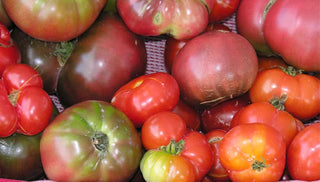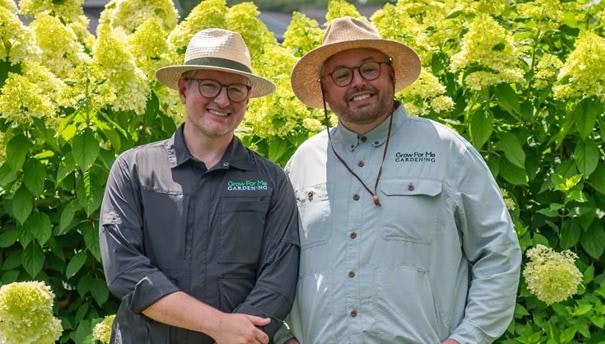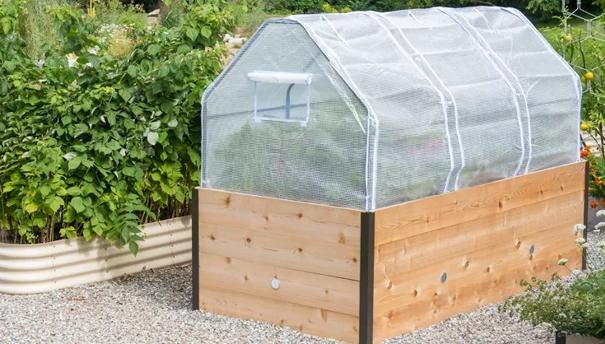From North to South, and coast to coast, tomatoes are consistently the most popular vegetable in American gardens. But for most gardeners, just any old tomato won't do.
Some like them red, some like them yellow, orange, or even purple. Some prefer tomatoes as tiny as a dime and some want them as big as a melon. Some like them juicy, some like them dense and pulpy. Fortunately, there are more than 700 different tomato varieties in cultivation today, so there are plenty of choices for everyone.
In this Article
If you're trying to decide which tomato varieties to grow, consider these issues:
Disease Resistance
Tomatoes are vulnerable to a number of diseases that can weaken the plant and reduce yields. Look at the seed packet or plant label to see if the variety has resistance to verticillium and fusarium wilt, two very common soil-borne diseases that affect tomatoes. Resistance to these diseases is designated by a V or F after the variety name. If tomatoes in your region suffer from root-knot nematode (N), Tobacco Mosaic virus (T) or Alternaria (A), look for resistance to these diseases as well. Late blight is a problem in many areas, so choose a variety that's resistant.
Growth Habit
To get a bumper tomato crop, you need to provide enough room for the plant and adequate support. To narrow down the choices, figure out where you are going to grow the plants. Tomato plants have one of two growth habits:
- Determinate varieties grow to a certain height (usually 2 to 3 feet), set fruit, and then concentrate on ripening that fruit.
- Indeterminate varieties keep growing taller and taller, setting and ripening fruit until they're killed by frost. These varieties require more support (from cages and stakes) and more a bit more attention from the gardener.
If you have a limited amount of growing space — or will be growing tomatoes in a pot or a planter — you should probably select a determinate variety. Determinate varieties are also good for cold-climate gardeners who need to harvest their whole crop within a couple weeks. If you have plenty of space, prefer to pick your tomatoes over several months, and are prepared to provide sturdy support with stakes, cages or ladders, select an indeterminate variety.
Heirloom, Open-Pollinated or Hybrid?
If you want to save your own seeds from one year to the next, you should plant heirloom or open-pollinated varieties. Seeds collected from these plants will "come true". This means they will grow into an identical plant the following year. Heirloom tomatoes, such as Brandywine, Mortgage Lifter and Arkansas Traveler, are open-pollinated varieties that have been passed on from one generation to the next.
Hybrids are a cross between two genetically different varieties that have been selected for certain traits. Hybrid varieties often offer better disease resistance or higher yields. If you save the seeds from hybrids you will not get the same traits in the new plants.
Most varieties of paste tomatoes are determinate. Because most of the fruit ripens within two or three weeks, I spend those couple weekends canning, making sauce for the freezer, and running the dehydrator. Then it's over! Because these determinate plants only get about 2 feet high, they do fine with little or no support. I just use plastic or straw mulch to keep the fruit off the ground.
Most cherry and beefsteak tomatoes are indeterminate. This means the plants get huge, but it also means they produce fruit continuously from early July right to frost. Make sure you have a tomato support and some tomato ties if you pick an indeterminate variety.
Time to Maturity
Timing is important if you have a short growing season. Where I live, I need to harvest my tomatoes by early September, before the light fades and frost comes. So I look for varieties that will start ripening fruit in less than 75 days. Many of the really big beefsteak varieties require 90 days to mature. Check the seed packet or plant label for days-to-harvest. Not sure when you usually get frost in fall? Use a zip-code look-up for frost dates.
Tomato Variety Flavor and Texture
Fruit characteristics are what I care about most. I use tomatoes in salads, on sandwiches, and just to eat out of hand. I dry them, can them and also use them in fresh and frozen sauces. So I select tomato varieties based on how well they're suited to these uses.
 Two tomato varieties with unusual striping.
Two tomato varieties with unusual striping.Some of Our Favorite Varieties
Bush 506
This compact hybrid has thick, sturdy, upright stems that support a heavy yield of flavorful, medium- to large-sized tomatoes. A determinate variety, it grows 18" to 24" tall. This early-maturing variety begins producing in about eight weeks. Grow Bush 506 from seed or buy transplants in spring.
 Bush 506 in one of our test gardens
Bush 506 in one of our test gardens4th of July
Growing to 4' or taller and producing loads of fruit that begin ripening earlier than many other varieties, this hybrid has good flavor, especially for an early-maturing variety. Start your own from seed or buy transplants in spring.
 4th of July Tomato seedling
4th of July Tomato seedlingLitt'l Bites
This is the most compact variety of tomato I've ever grown," says Deborah Miuccio, who runs our test gardens. "It doesn't get bigger than 2 feet tall. I harvested over 500 cherry tomatoes from a single plant." Look for seeds in your favorite catalog, or seedlings at your garden center.
Brandywine
This heirloom has the most delicious flavor and texture of any tomato I've grown," says Miuccio. "The plant is gorgeous, with beautiful, large leaves and fruit. Grow one of each color. Only gets about 3-4' tall." Look for seeds in your favorite catalog — or seedlings at your garden center.
 Brandywine tomatoes in pink and yellow
Brandywine tomatoes in pink and yellowJuliet
This indeterminate produces a huge crop. The fruit is oval and it's about 2" long. It's firm, glossy and quite dense, like a miniature paste tomato. Juliet ripens fast and furious, and I use it for soups, sauces, salsas and cold salads. They also get stewed whole for canning, and get halved for drying.
Best Tomatoes for Pots and Planters
Even if you don't have a lot of space, you can grow a crop of juicy tomatoes. The secret: choose a variety that matches the type of planter and support you'll be using. With more and more options available each year, here's our guide to selecting the perfect plant:
- In general, it's best to choose determinate (bush) varieties, which are more compact. Indeterminate types can get quite tall — up to 10' or more! However, there are also shorter indeterminate varieties so check plant tags for mature heights.
- Consider varieties that have "patio," "dwarf" or "mini" in the name, which means the plant is probably compact.
- Choose a variety with a mature height that is equal to or less than the height of the cage or other support you'll be using.
- Some of our tomato planters designed here in Vermont have built-in supports; a few even have extensions you can add to increase the height of the support so you can grow taller varieties.
- For the broadest range of choice, start from seed. The Dwarf Tomato Project offers dozens of options, identified by gardeners from around the globe.
- Small-fruited varieties don't always grow on compact plants. Some cherry tomato plants can become huge; others are smaller in stature. Check the plant tag first.
- Get garden-tested recommendations from local garden center experts, neighborhood gardeners and friends.
- Consider pruning the vines to boost productivity and reduce bulk.
Once you have the right plant, make sure you use potting soil that's made for pots and planters. Do not use ordinary garden soil, which does not drain well when used in containers. Choose a tomato support that will accommodate the growth of your plant. In high winds, a mature plant can act like a sail. Find a way to anchor the planter so it's secure.


 Litt'l Bites, thriving in a
Litt'l Bites, thriving in a


